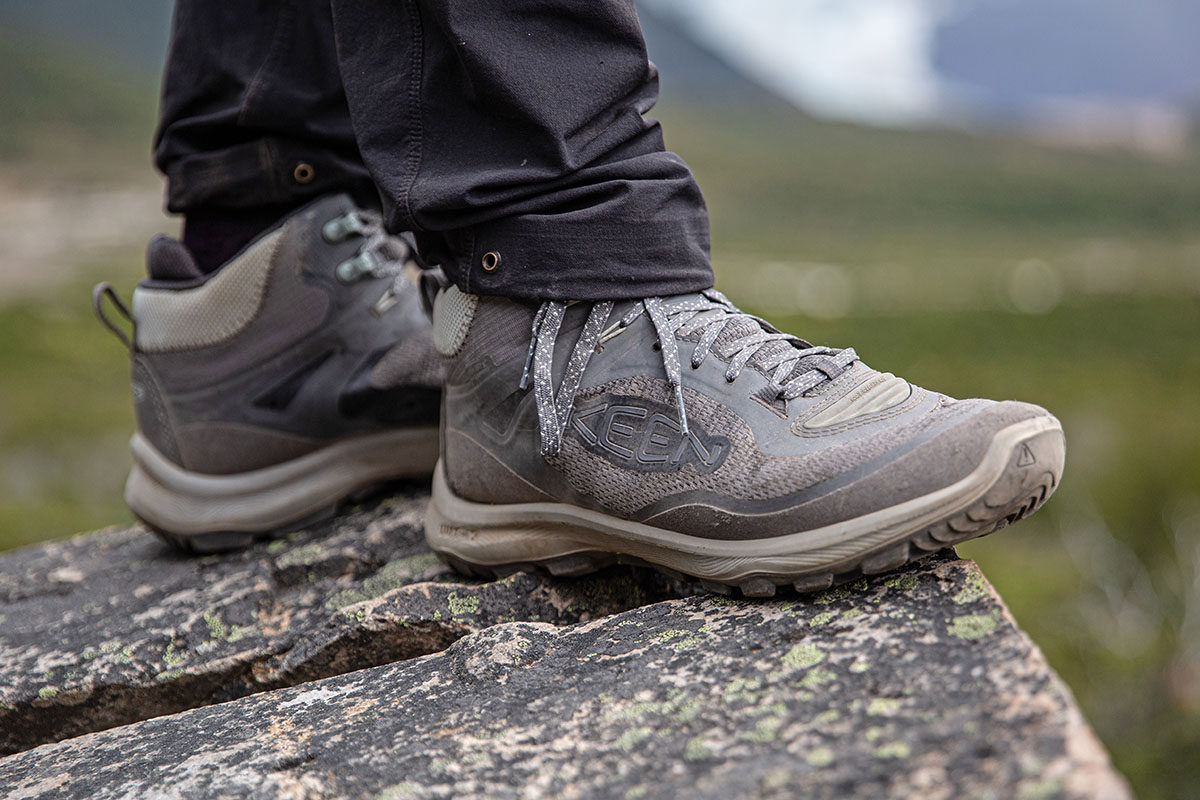
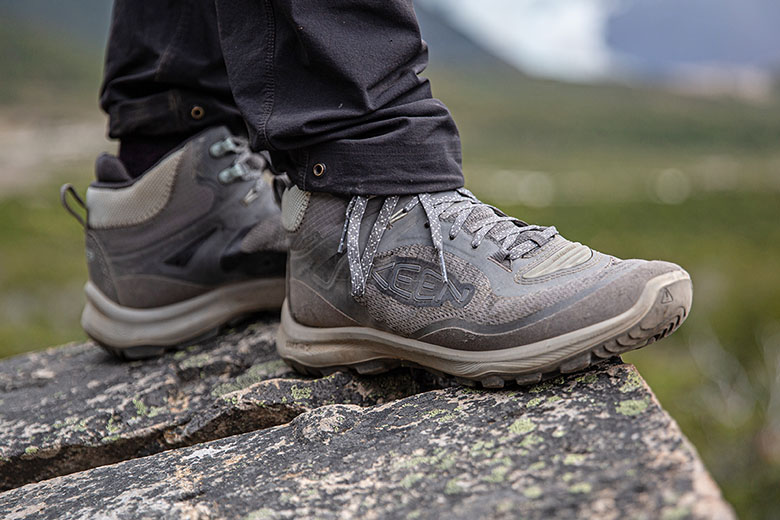
Price: $180
Weight: 1 lb. 14.4 oz. (women’s size 9)
Waterproof: Yes (KEEN.DRY)
What we like: Flexible, nimble, and comfortable out of the box—it feels more like a running shoe than a hiking boot.
What we don’t: Decidedly underbuilt for covering technical terrain with a pack.
See the KEEN Terradora Flex WP
KEEN’s Terradora is one of just a few women’s-specific designs on the market, and the latest “Flex” version sticks to a similar formula but with added flexibility and cushioning. I recently brought the boots to Patagonia and put them to the test while hiking and backpacking on everything from well-trodden trails to steep, muddy scree fields. In the end, it was clear that the Terradora was in over its head on much of the technical terrain we encountered, but it’s a nice match for easy to moderate day hikes on maintained trails. Below we outline our experiences with the Terradora Flex. To see how it stacks up to the competition, see our article on the best women’s hiking boots.
True to its name, the KEEN Terradora Flex Waterproof Boot has a flexible, running shoe-like feel that was highly comfortable from the outset. It’s worth noting that the women’s-specific fit is different from most KEEN boots, including a narrow shape (the brand is known for their wide toe box) and higher arch. As such, my standard size 8.5 was a little too short and restrictive at the forefoot, so I opted for a 9 instead. In the larger size, the boots felt a bit like slippers: The mesh upper is soft and pliable, the namesake KEEN.BELLOWS FLEX panel over the forefoot allowed for a natural gait with no pressure points at the crease (especially helpful on steep ascents), and the outsole provided great isolation from the ground below, even when boulder hopping over sharp rocks. The air-injected foam midsole also had a bouncy and energetic feel out of the box, which contributed to the nimble, agile personality.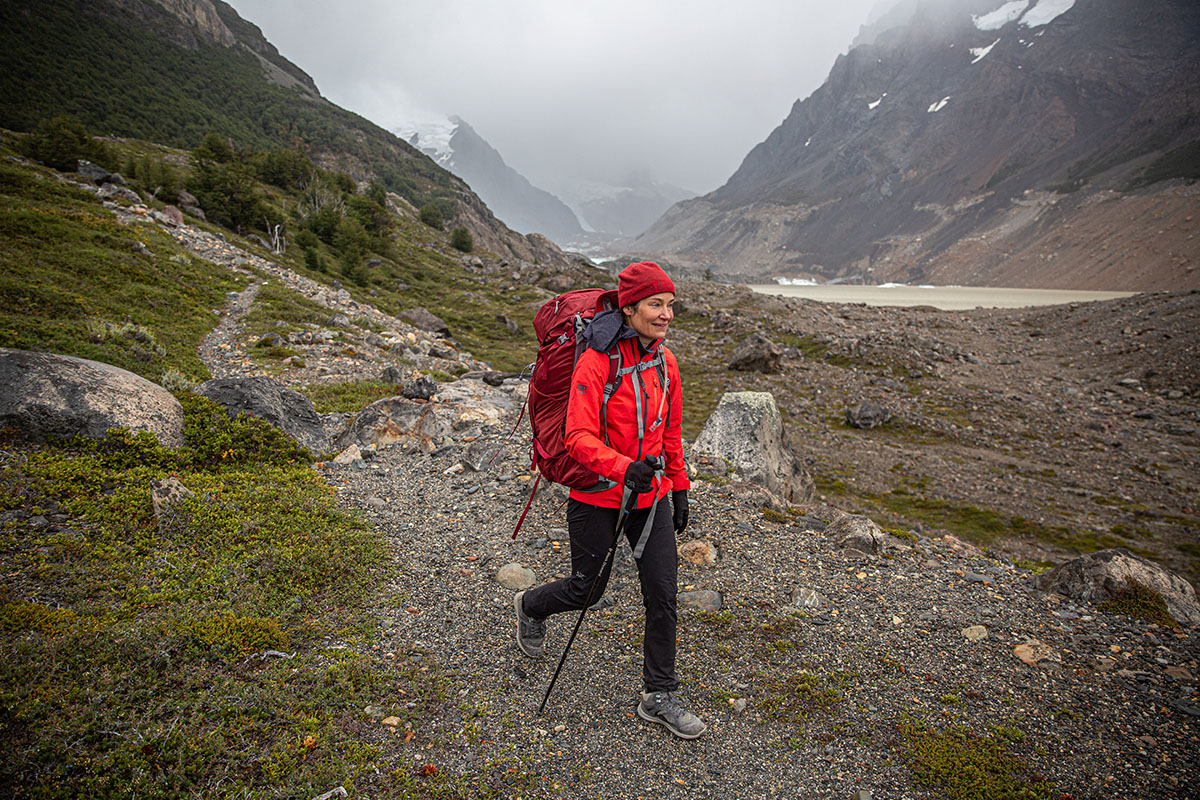
That said, I did come away with some comfort-related complaints. First is the toe box, which doesn’t provide much coverage or protection at the front of the boot—this was especially painful whenever I accidentally jammed my foot between rocks while crossing boulder fields. The foam midsole also compacted quickly under the weight of a full backpacking pack, leading to a stiffer feel than what I experienced initially. What’s more, the Terradora is the only boot I’ve worn to date that caused my feet to overheat—the KEEN.DRY waterproof membrane is a noticeable step down in breathability from Gore-Tex, in my experience. Finally, I had a little too much room in the boots, causing my footing to feel imprecise. To be fair, this was likely a result of sizing up, and I was still able to move quickly over most terrain, but it’s clear that the Terradora is best suited for easier trails rather than technical overnights with a pack.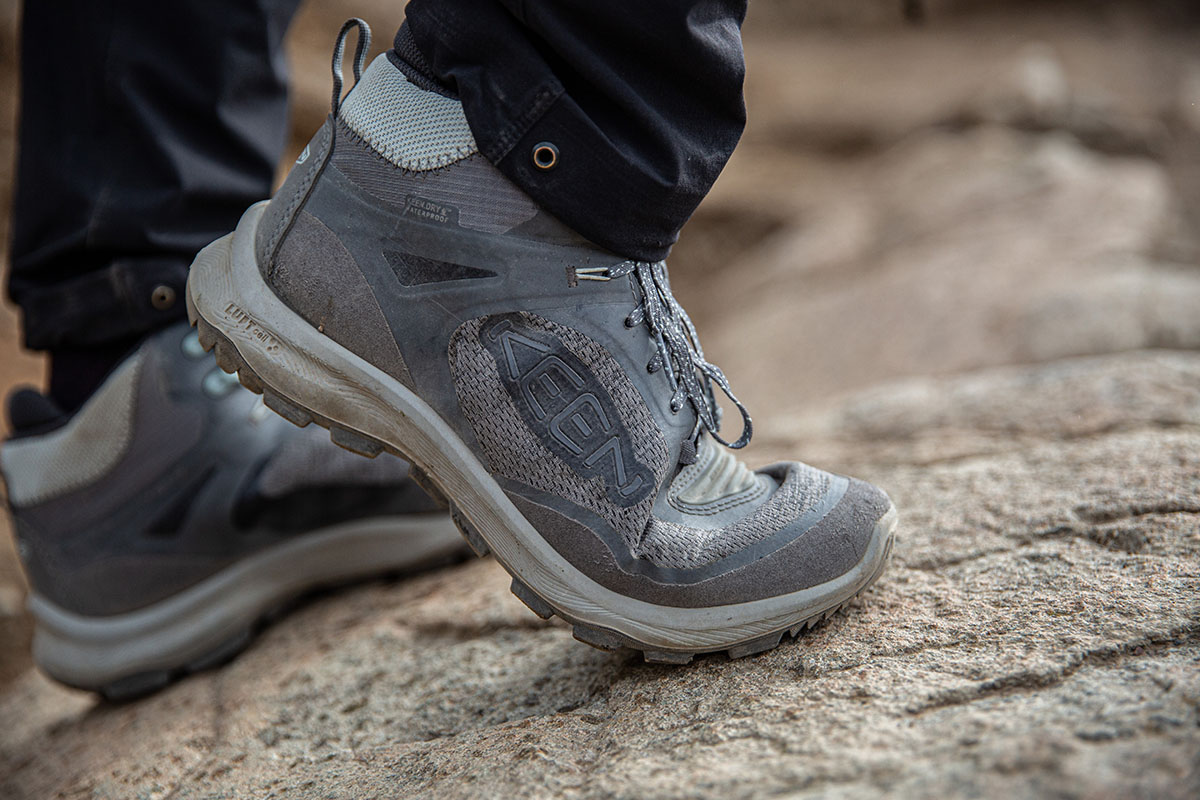
At 1 pound 14.4 ounces for my pair of size 9 boots (listed weight is 1 lb. 10.3 oz.), the Terradora Flex isn’t particularly feathery but stacks up fairly competitively in the women’s hiking boot market. For comparison, the KEEN boots split the difference between burly, backpacking-ready leather designs like LOWA’s Renegade GTX Mid (2 lbs. 2 oz.) and lightweight, trail runner-inspired boots like Altra’s Lone Peak ALL-WTHR Mid 2 (1 lb. 8 oz.) and Salomon’s Cross Hike 2 Mid GTX (1 lb. 9.5 oz.). However, it’s important to note that the Terradora is much closer to the latter than the former—it was never hefty or clunky underfoot and allowed me to move quickly and confidently over most terrain.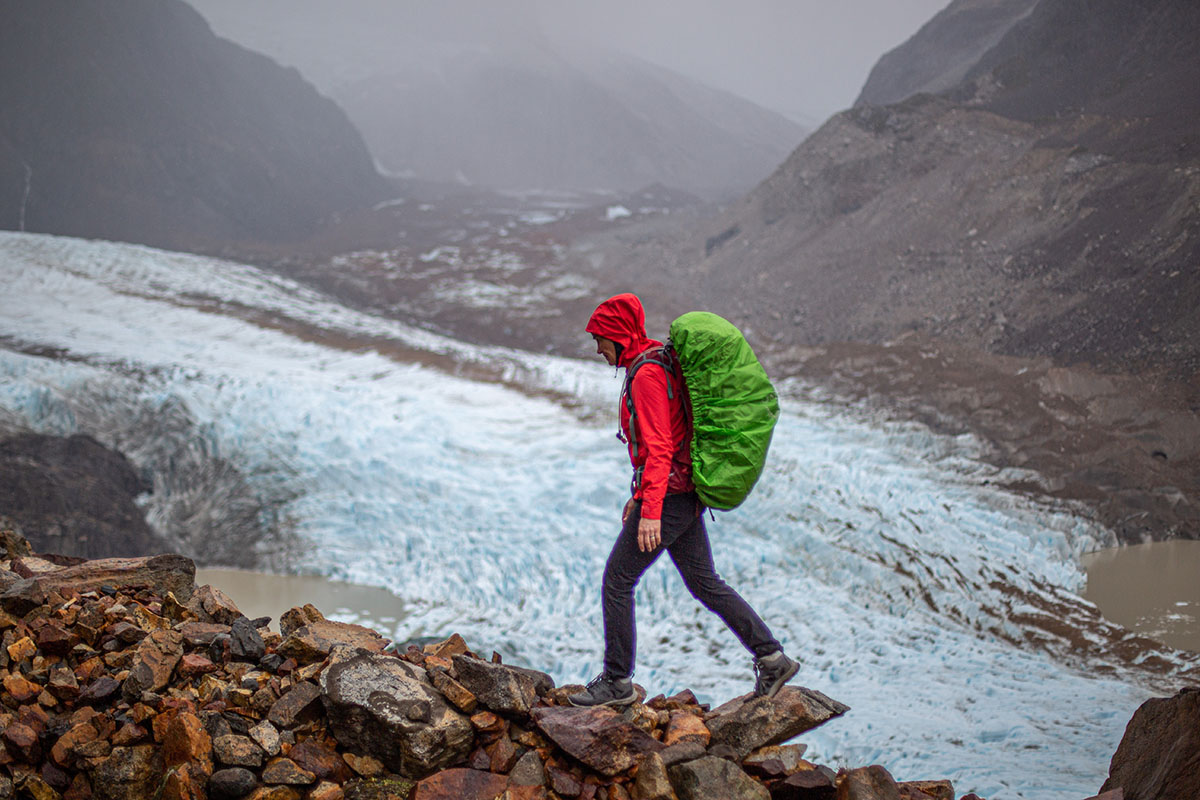
I was initially concerned about the Terradora’s fairly shallow (4mm) lugs but came away pleased by the outsole’s overall performance. Though not aggressive by any means, the lugs provide a good amount of surface contact, and the TPU rubber compound was particularly confidence-inspiring on rocks and boulders, even when loaded down with a full backpacking pack. I do wish the lugs extended up over the toe a little for added bite on steep ascents—I slipped a couple times while climbing loose gravel slopes and muddy sections of trail—but overall traction was better than expected given the boots’ more casual intentions.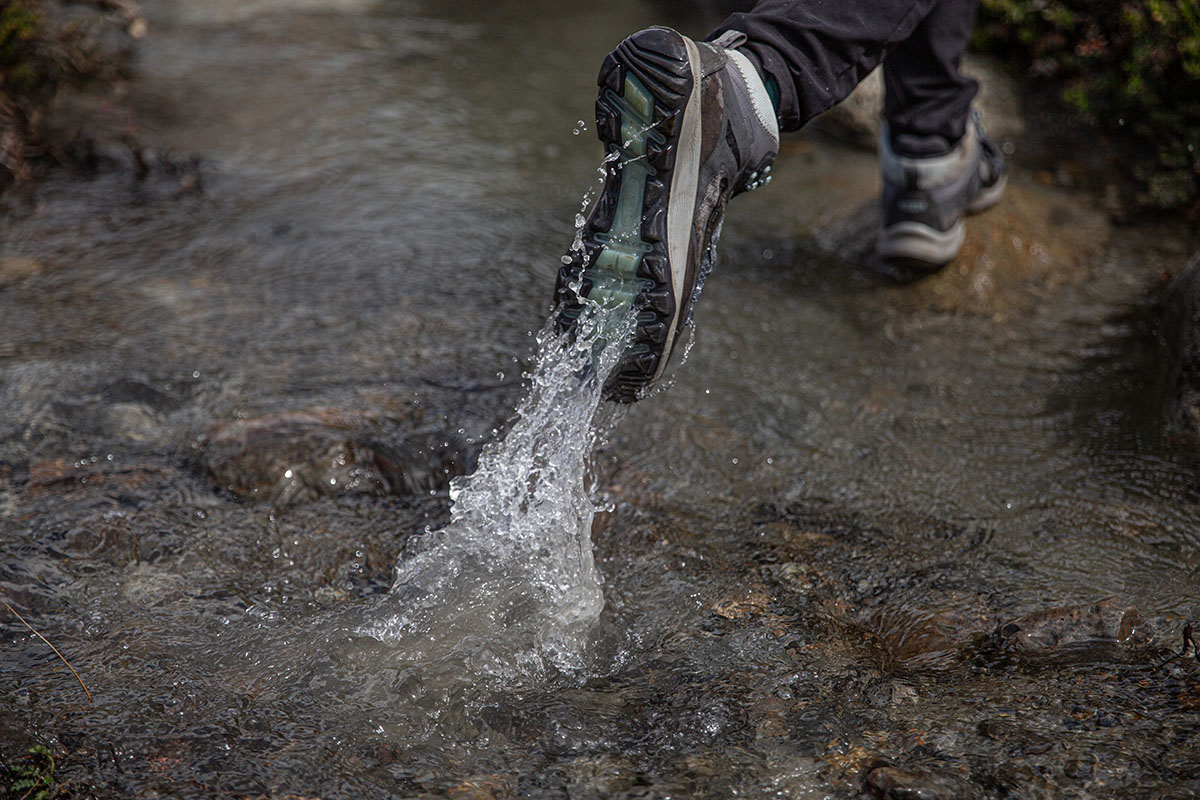
As its name suggests, the Terradora Flex puts a premium on flexibility, which comes with some inherent downsides in terms of stability and support. On the bright side, the boots boast a shank that adds some structure underfoot and helps with side-to-side torsion. I also appreciate that the lacing system continues to the top of the cuff (unlike designs like Salomon’s Cross Hike 2 Mid GTX), effectively locking my ankle in place. In fact, I suffered no ankle rolls during testing despite subjecting the boots to a lot of tricky and uneven terrain, including scrambling up and down countless boulder fields and scree slopes.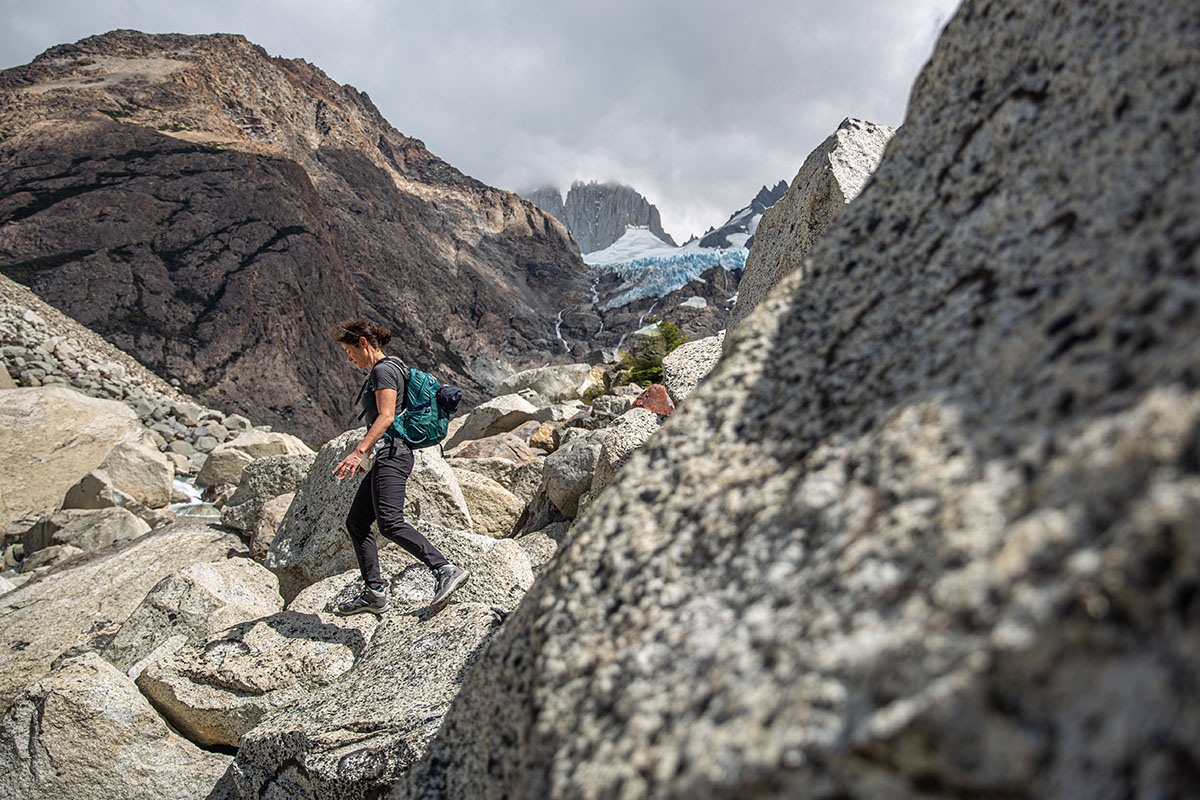
That said, I didn’t find the Terradora Flex to be particularly supportive underfoot. As I touched on above, the midsole packed out quickly under the weight of a full pack, which led to a fairly stiff and unforgiving feel. The soft and pliable upper also lacks the structure and all-around support of beefier, backpacking-ready designs like LOWA’s Renegade GTX Mid or Salomon’s Quest 4 GTX. Again, the Terradora is a fine choice for easy to moderate day hikes over mellow terrain, but it’s lacking in technical chops for shuttling an overnight load into the backcountry.
The Terradora Flex Waterproof boots utilize KEEN’s in-house waterproofing membrane (called KEEN.DRY) to seal out moisture, and I found it to be a very effective barrier. In testing, the boots deftly withstood numerous stream and river crossings without issue. They also sealed out substantial rain on our final overnight of the trip, keeping my feet dry and comfortable in the wet and chilly weather.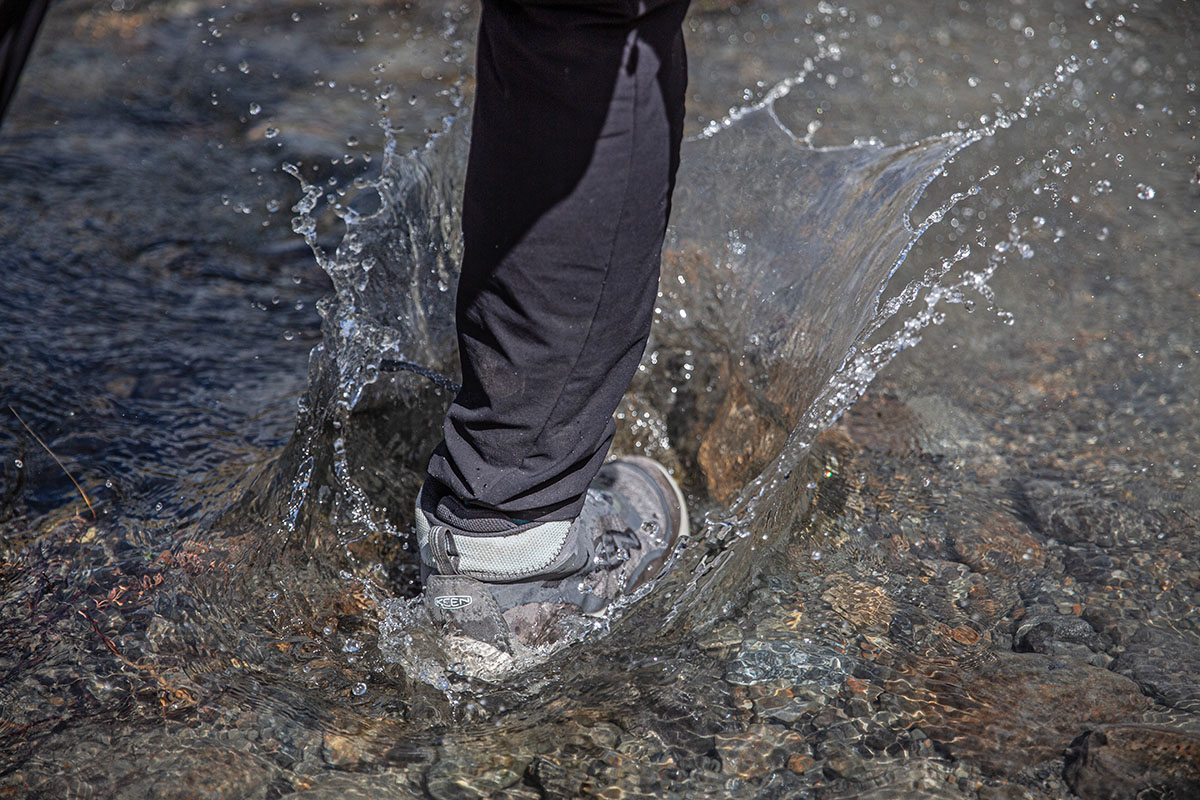
On the flip side, I was disappointed by the Terradora Flex’s limited breathability. As I mentioned above, this is the only boot that has caused my feet to grow noticeably warm and clammy (and that’s coming from someone who runs fairly cold). For reference, temperatures were very moderate in Patagonia when we visited—most days hovered in the 50s Fahrenheit—so I would recommend looking elsewhere if you run warm or want a boot for summertime hiking. Non-waterproof designs typically breathe better than their waterproof counterparts, and a couple of our favorites include Merrell’s Moab 3 Mid and Altra’s Lone Peak Hiker 2.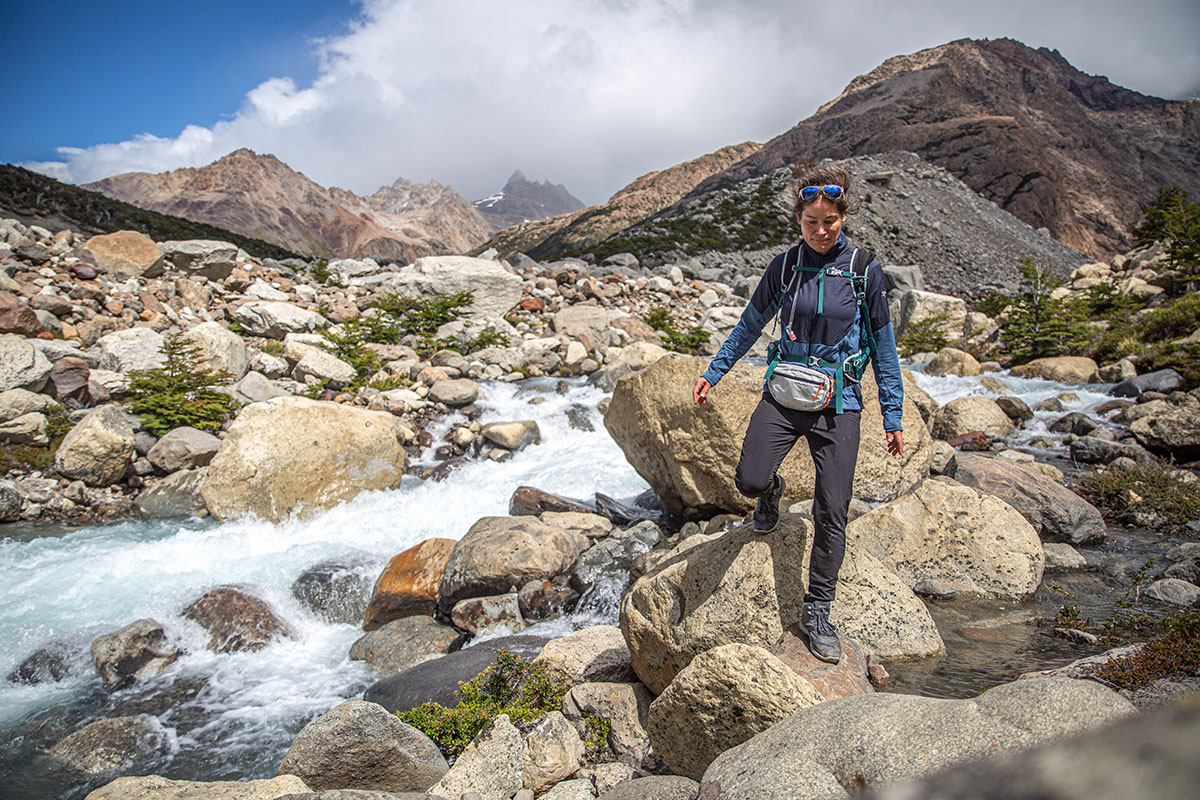
In addition to breathability, durability is another area where the KEEN Terradora Flex Waterproof boots fall short. For starters, the upper is made of mostly reinforced mesh that feels reminiscent of knit running designs like the Altra Torin 6. KEEN did add some TPU overlays along the top and sides for increased tear resistance, but after less than a week of trail use, the exterior is already showing significant signs of wear. As I noted above, the midsole also packed out quickly under the weight of a full (30-lb.) backpacking pack. The boots are still comfortable, but they lack the bouncy feel that they initially had out of the box.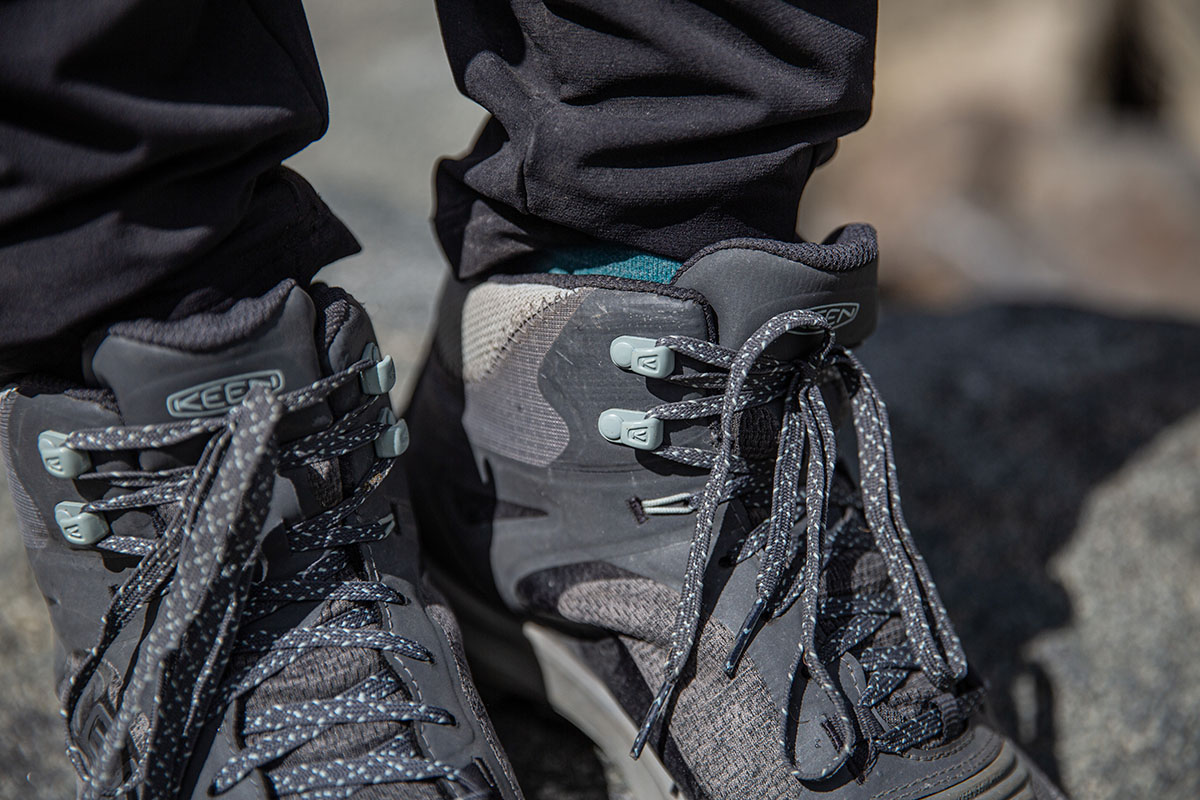
To be fair, most of the terrain we covered was pretty rugged, and my feet were often wedged between boulders or sliding down scree slopes. It’s also worth noting that the boots are still waterproof, which indicates that the abrasions they’ve suffered are purely cosmetic. In other words, I feel reasonably confident that the Terradora Flex would hold up well on maintained trails and less demanding terrain. But again, there are far more robust and capable designs for hauling serious weight into the backcountry.
KEEN is known for their signature wide toe box, but the women’s-specific Terradora Flex is decidedly on the narrow and snug end. In light of that, I opted for a size 9 (I’m usually an 8.5) and was mostly pleased with the all-around fit. Despite taking the boots out of the box and directly onto fairly technical trails in Patagonia, I experienced no pressure points or hotspots, which truly is high praise. The lacing system also does a good job of holding the foot in place, and the eyelets on the cuff are effective at locking the ankle down. I have found that the stretchy laces tend to tangle themselves into knots at the ends easily, but they thankfully haven’t loosened or come untied.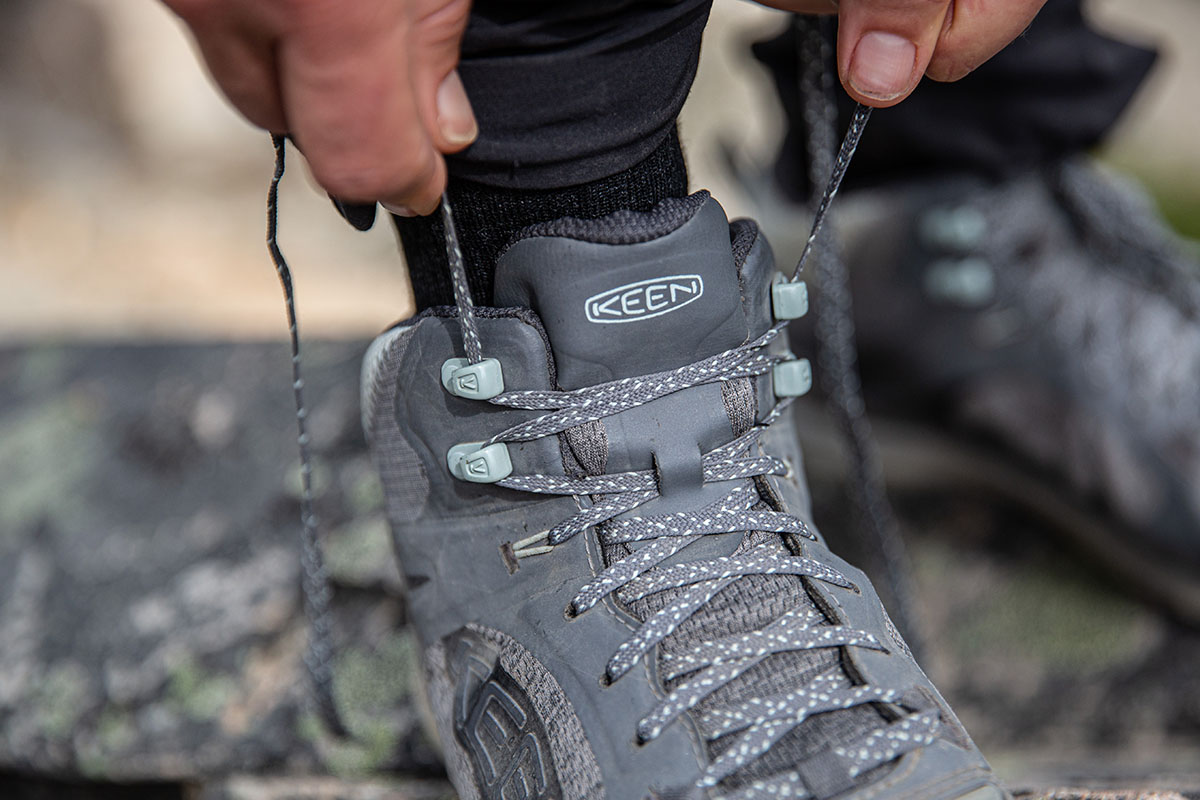
KEEN is a longtime leader in the hiking boot market, and we appreciate that they’ve been incorporating more sustainable practices into their lineup of late. In the case of the Terradora Flex Waterproof boots, you get a PFAS-free DWR coating that forgoes the use of man-made chemicals that don’t break down (they’re considered “forever chemicals”) and are known to be harmful to the environment. The boots also feature the brand's Eco Anti-Odor treatment that uses probiotics instead of pesticides to fend off bacteria. Added up, KEEN's sustainability efforts are a welcome bonus and only add to the Terradora’s overall appeal.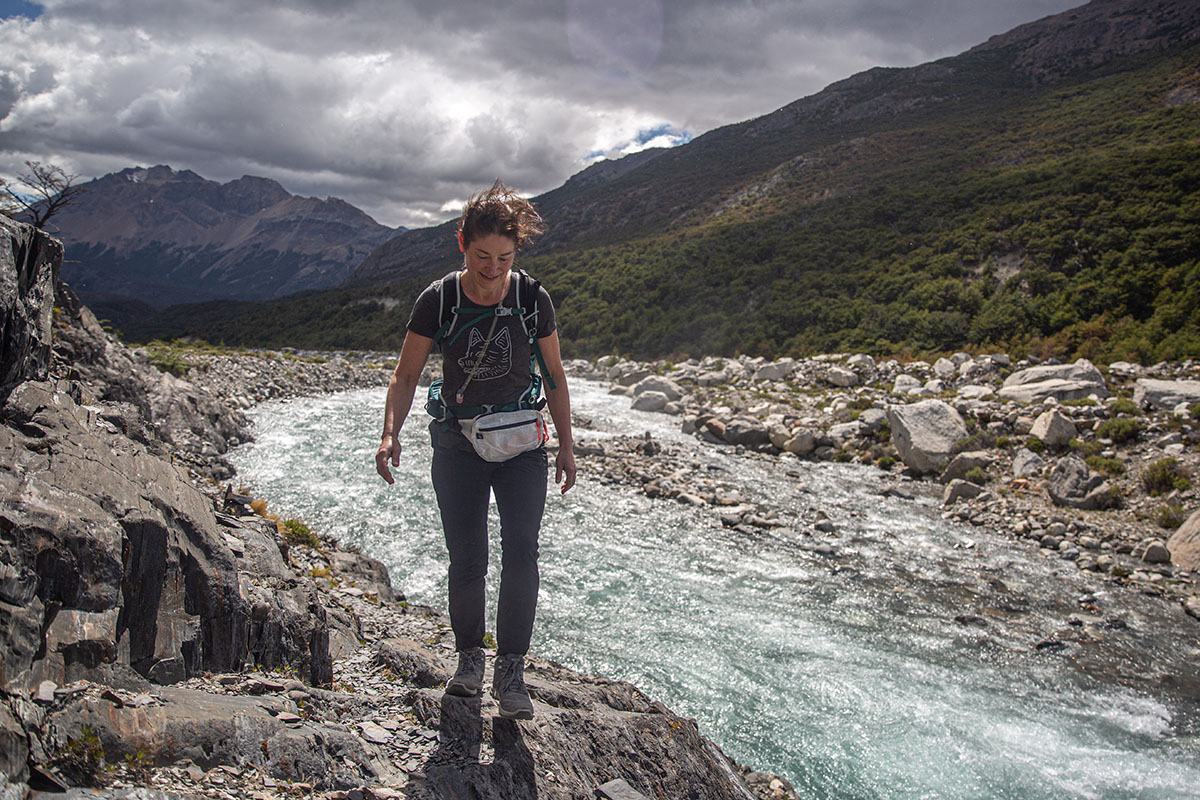
I tested the Terradora Flex Waterproof Boot for this review, and it’s also available in a low-top version for women who don’t need or want the added ankle coverage. Compared to the mid-height boot, the women’s Terradora Flex Waterproof Shoe is $10 cheaper and weighs a little less at 1 pound 7.4 ounces per pair but is otherwise identical in terms of overall construction and features (including colorway options). There are also shoe and boot variations of the standard Terradora II, which forgo the BELLOWS FLEX panel over the forefoot and swap in the brand’s ALL-TERRAIN rubber outsole with a more aggressive lug pattern and KonnectFit heel cup for a more locked-in feel at the back of the foot. Rounding out the lineup is the Terradora II Leather Waterproof Boot, which is largely similar to the Terradora II but with a more hardwearing leather upper for a slight weight penalty.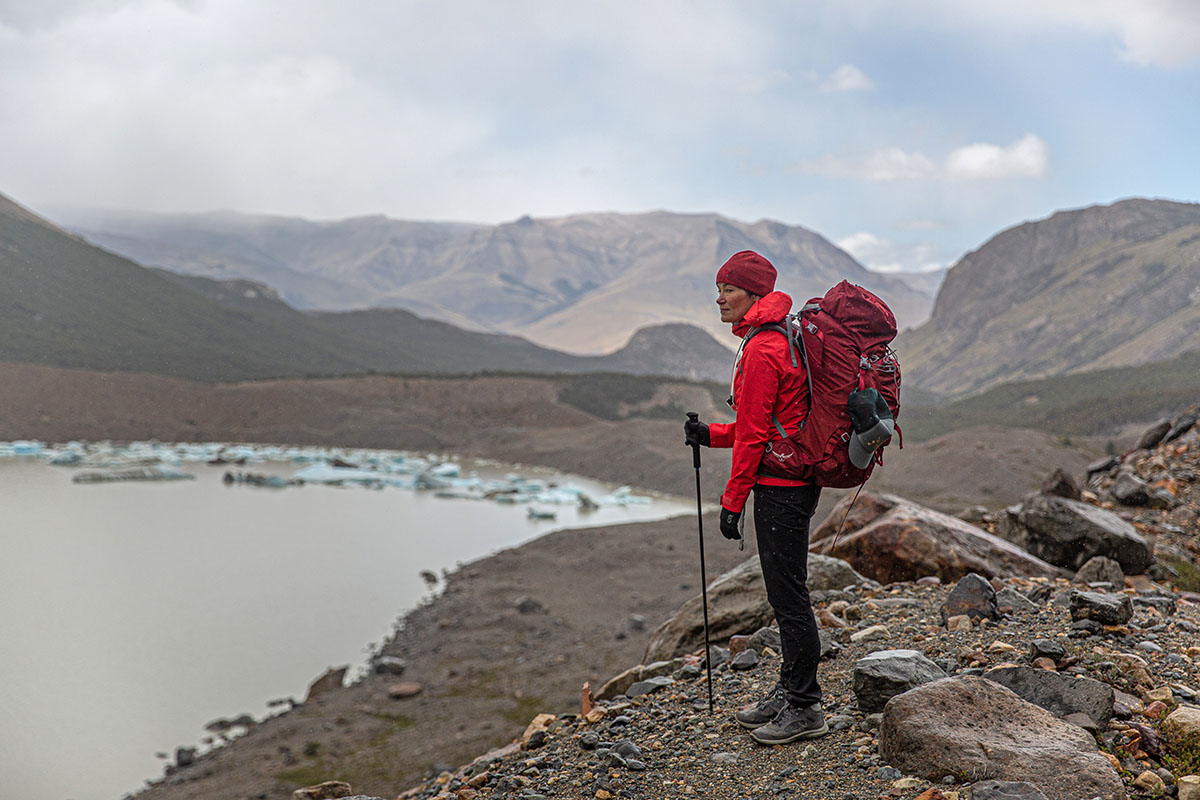
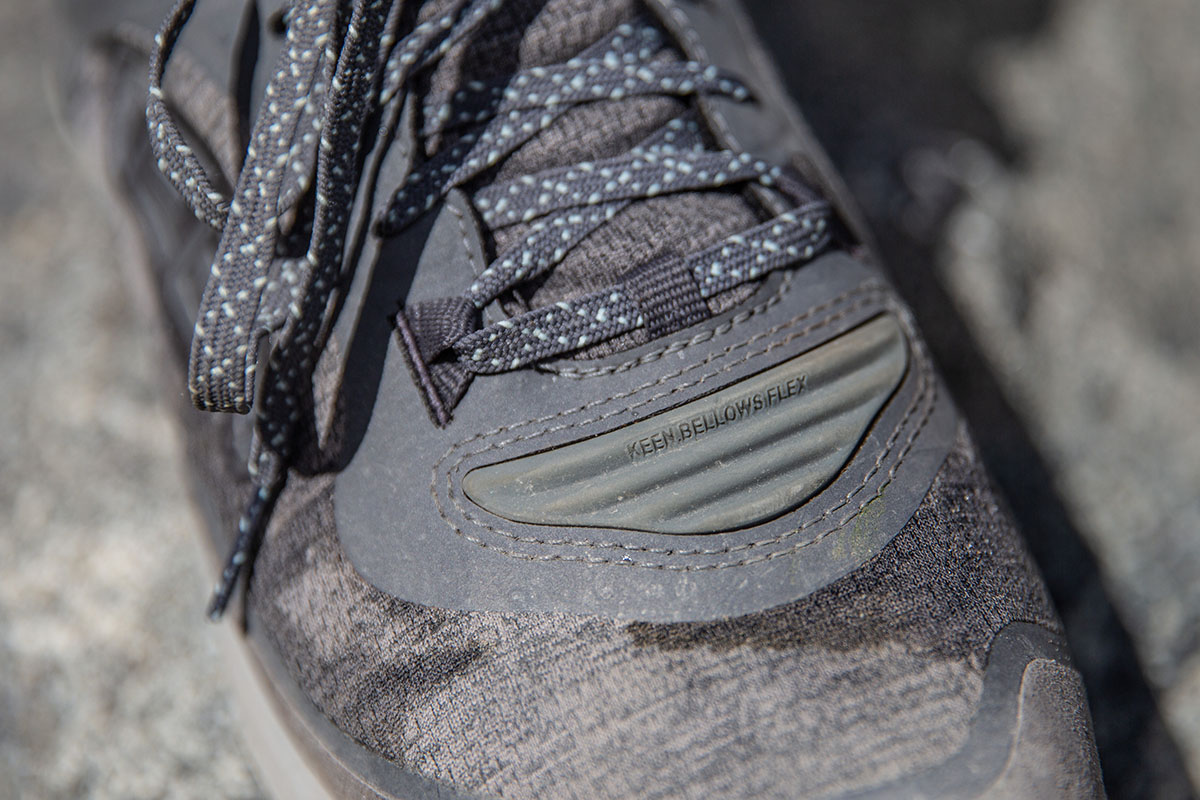
| Boot | Price | Category | Weight | Waterproof | Upper |
|---|---|---|---|---|---|
| KEEN Terradora Flex WP | $180 | Lightweight | 1 lb. 10.3 oz. | Yes (KEEN.DRY) | Mesh /TPU |
| KEEN NXIS EVO WP | $190 | Lightweight | 1 lb. 8.9 oz. | Yes (KEEN.DRY) | Mesh / TPU |
| Salomon Cross Hike 2 Mid GTX | $190 | Lightweight | 1 lb. 9.5 oz. | Yes (Gore-Tex) | Synthetic |
| Altra Lone Peak ALL-WTHR Mid 2 | $190 | Lightweight | 1 lb. 8 oz. | Yes (eVent) | Synthetic |
| REI Co-op Flash | $150 | Lightweight | 1 lb. 13 oz. | Yes (HydroWall) | Knit |
KEEN’s Terradora Flex Waterproof is a comfortable and flexible women’s hiking boot for casual day hikes on maintained trails, but it’s decidedly lacking in technical chops. For a step up in performance, it’s worth considering KEEN’s own NXIS EVO Waterproof, which we also had with us in Patagonia. The two boots weigh around the same, feature mesh uppers with TPU overlays, boast KEEN’s in-house waterproofing tech, and use the same sustainability measures. That said, the NXIS EVO gets the clear edge in protection and stability thanks to its generous toe cap, stiffer upper, thick padding along the tongue and collar, and KonnectFit system for locking down the heel. You also get upgraded traction in the form of KEEN's ALL-TERRAIN outsole, as well as a more accommodating "Original" fit that offers more space at the forefoot for toes to splay. The Terradora is noticeably softer and more flexible by comparison, which could be a plus for comfort-focused day hikers. But for backpacking, there’s no question: The NXIS Evo is the more capable pick.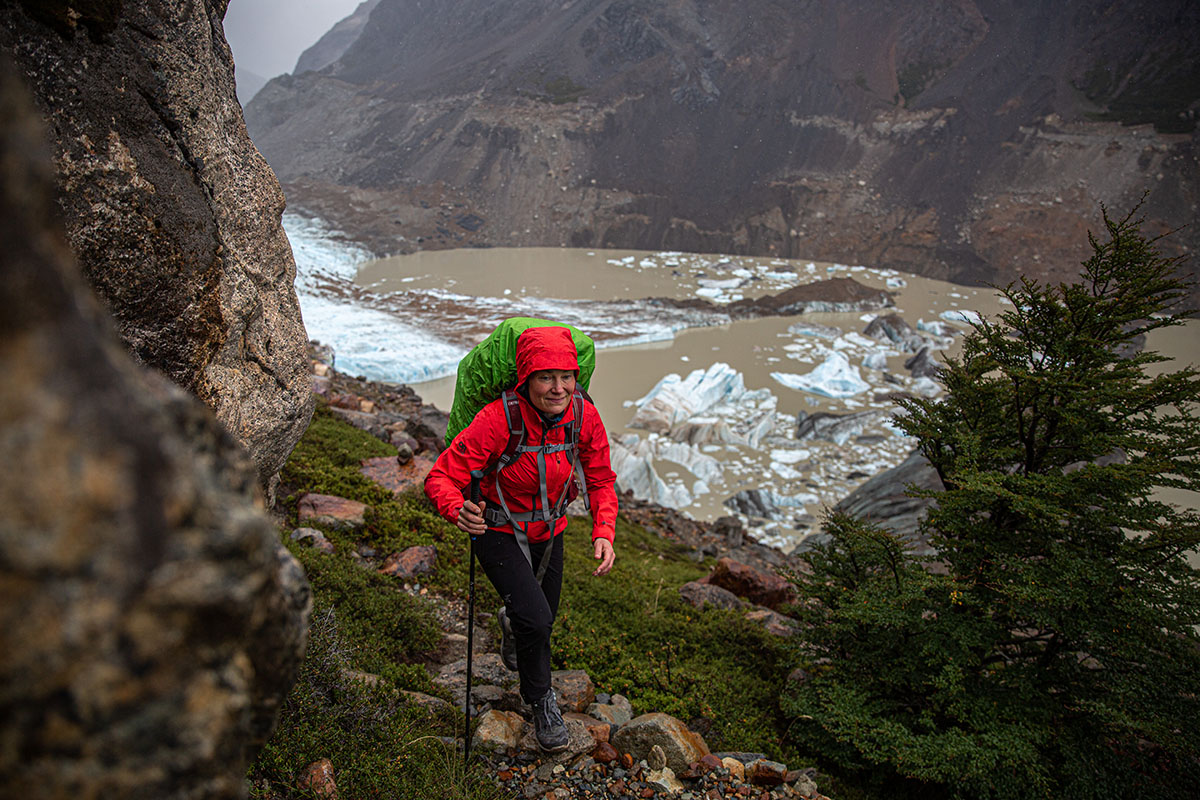
Outside of KEEN’s lineup, Salomon Cross Hike 2 Mid GTX is another nimble hiker with a running shoe-like personality. Like the Terradora Flex, the Cross Hike 2 features a well-padded and bouncy midsole that offers great energy return and has retained its shape after multiple overnight outings. The Cross Hike also wins out in traction with the brand’s proven Contagrip rubber and deep, multidirectional lugs that extend over the toe box for added bite when ascending steep slopes. Other advantages include a more breathable Gore-Tex membrane, slightly lower weight, and sleeker appearance. Neither boot stands out from a durability or stability standpoint, but the Salomon is far and away the more performance-ready design for technical day hikes and lightweight backpacking missions (for more, see our Cross Hike 2 Mid GTX review).
Next up is Altra’s Lone Peak ALL-WTHR Mid 2, which is a mid-height take on their signature trail runner. For $10 more than the Terradora Flex, the Altra offers a step up in on-trail comfort with the brand’s trademark wide toe box, generous cushioning, and zero-drop design that allows for a very natural gait. It’s also a little lighter at 1 pound 8 ounces per pair for the women’s version with a fast-moving personality to match, and the eVent upper does a great job sealing out the elements while still allowing the shoe to breathe (unlike the KEEN, which left me with sweaty feet in moderate temperatures). Finally, you get a step up in traction with the Altra’s MaxTrac rubber outsole and widely spaced lugs, especially on soft ground like mud. Both boots prioritize comfort and flexibility over protection, support, and durability, but we consider the Altra the more refined design in this category.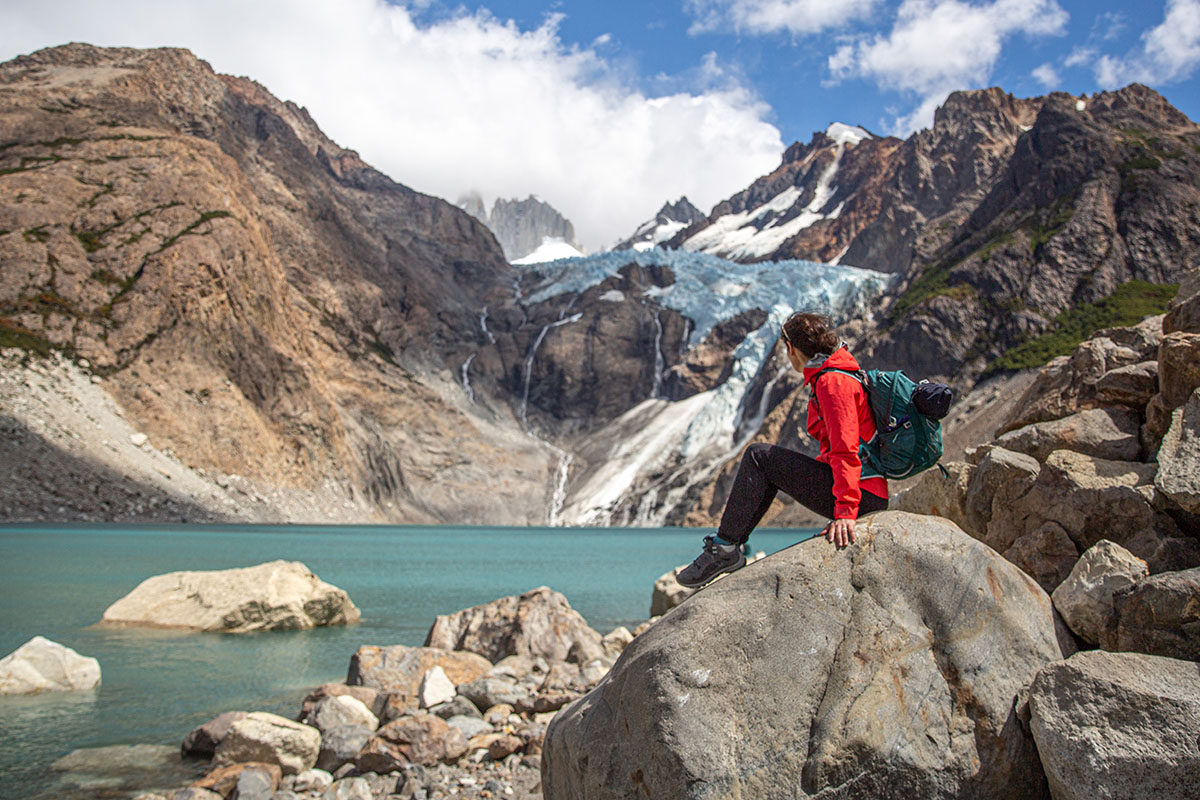
A final competitor to consider is REI Co-op’s Flash, which is a more budget-friendly alternative to the Terradora Flex at just $150. Highlights include a high-quality knit upper that’s similarly flexible, a thick insole that offers improved arch support and cushioning, and slightly better stability and protection for covering rough and rocky terrain. On the flip side, the Terradora wins out in weight by around 3 ounces per pair, has a snugger and narrower fit (especially at the heel), and features a more secure lacing system that doesn’t loosen throughout the day. It’s also worth noting that our tester experienced significant pressure points along the inside of both ankles while testing the Flash, and the shallow lugs lacked bite in softer surfaces like mud. Finally, neither boot is a great breather thanks to their in-house waterproof membranes. In the end, we think the Terradora balances its priorities a little better, but women with wide feet might prefer the more accommodating Flash.